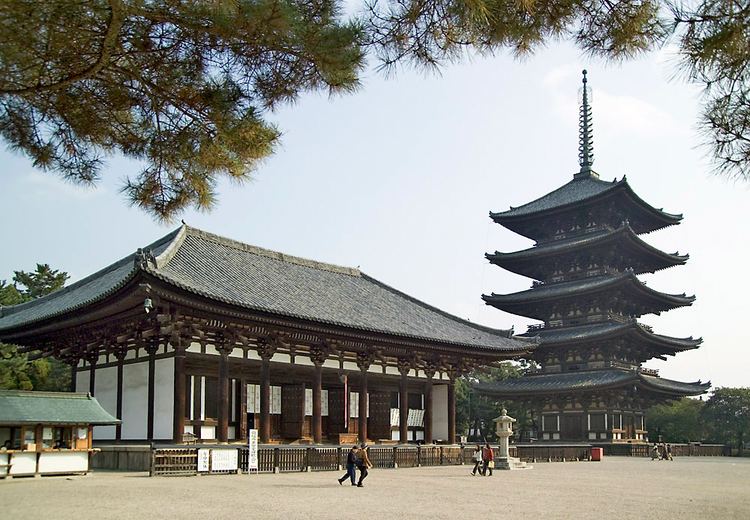Affiliation Hossō Completed 669 | Phone +81 742-22-7755 | |
 | ||
Deity Shaka Nyorai (Śākyamuni) Address 48 Noboriojicho, Nara, Nara Prefecture 630-8213, Japan Similar Tōdai‑ji, Kasuga‑taisha, Yakushi‑ji, Nara Park, Tōshōdai‑ji | ||
Kōfuku-ji (興福寺, Kōfuku-ji) is a Buddhist temple that was once one of the powerful Seven Great Temples, in the city of Nara, Japan. The temple is the national headquarters of the Hossō school and is one of the eight Historic Monuments of Ancient Nara inscribed on the UNESCO World Heritage List.
Contents
History
Kōfuku-ji has its origin as a temple that was established in 669 by Kagami-no-Ōkimi (鏡大君), the wife of Fujiwara no Kamatari, wishing for her husband’s recovery from illness. Its original site was in Yamashina, Yamashiro Province (present-day Kyoto). In 672, the temple was moved to Fujiwara-kyō, the first planned Japanese capital to copy the orthogonal grid pattern of Chang'an. In 710 the temple was dismantled for the second time and moved to its present location, on the east side of the newly constructed capital, Heijō-kyō, today's Nara.
Kōfuku-ji was the Fujiwara's tutelary temple, and enjoyed as much prosperty for as long as the family did. The temple was not only an important center for the Buddhist religion, but also retained influence over the imperial government, and even by "aggressive means" in some cases. When many of the Nanto Shichi Daiji such as Tōdai-ji -declined after the move of capital to Heian-kyō (Kyoto), Kōfuku-ji kept its significance because of its connection to the Fujiwara.
The temple was damaged and destroyed by civil wars and fires many times, and was rebuilt as many times as well, although finally some of the important buildings, such as two of the three golden halls, the nandaimon, chūmon and the corridor were never reconstructed and are missing today.
Architectures and treasures
The following are some of the temple's buildings and treasures of note.
Architecture
Treasures
Plan
Showing the original layout of the temple, with the later Three-storied pagoda, Nan'en-dō, and Ōyūya superimposed. Of the buildings marked, only these three together with the Five-storied pagoda, Tōkon-dō and Hoku'en-dō remain.
